
Most B2B sales demos suck.
An AE harps about how awesome the company and the product is, shows some cute features and expects the prospect to not just believe them, but buy from them.
It’s not their fault, sales reps are incentivized, literally, to focus on selling.
But B2B sales are less about you and your product.
It’s about educating the prospect — helping them deeply understand the problem space, relating with their challenges and showing them all the choices they have available.
If you are the right fit for them, they’ll pick you anyway.
If your competitors are also a right fit for them, they’ll still pick you because only you spoke to them with the intention of helping them, not selling.
You win either way.
Here’s the battle-tested sales template I’ve developed over the years. I’ve seen the close rate increase by as much as 12%, though 6-8% is more typical.
Step 1: Problem framing
After the intros and some standard rapo building talk, begin with setting the context for the prospect.
You are the expert of the solution space, but the prospect is the expert of the problem space.
It’s critical to align on the problems that you think you are solving vs the problem the prospect is trying to solve.
The entire pitch is driven by the AE verbally. The content on the slides is ONLY to assist & anchor around spoken words.
Never start with the front page with your company name. It adds no value. Start directly from Slide 2.
Outline the problems and obstacles your prospect has or can closely relate to AS WELL AS the outcomes/impact of solving those problems & overcoming those obstacles.
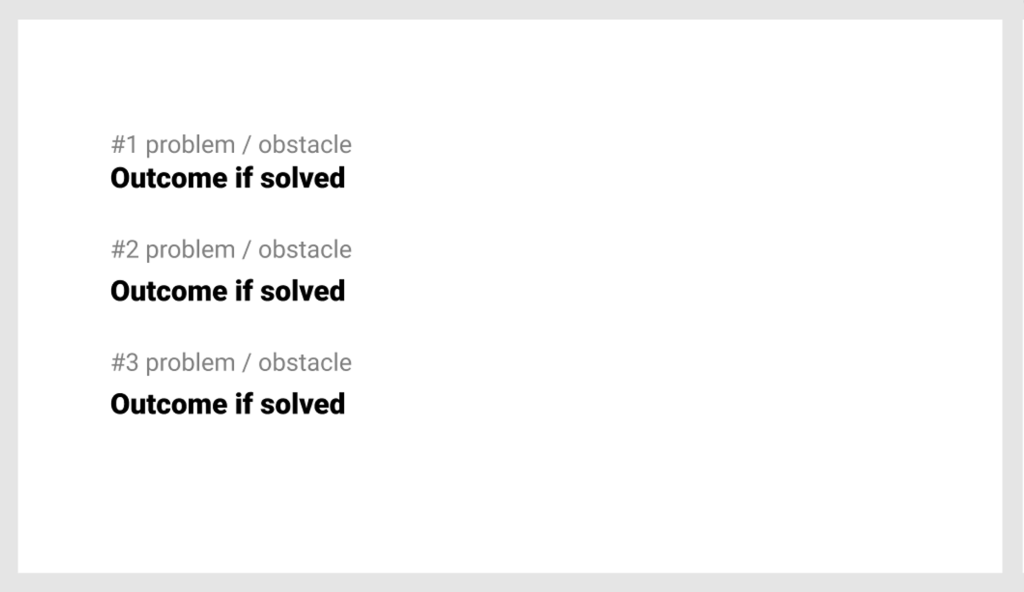
Find the top 3 problems that you know that your ICP will be nodding their heads on.
The next step is perhaps the most important. It lays the foundation & anchors the rest of the conversation.
Reframe the prospect’s problem in YOUR words.

This is where the prospect’s problem & your company’s point of view of that problem aligns.
It primes the prospect to be open to your solution (which comes later) because we’ll connect it back to this framing, completing the logic circle and giving the prospect an aha moment.
Step 2: Battleground deep-dive
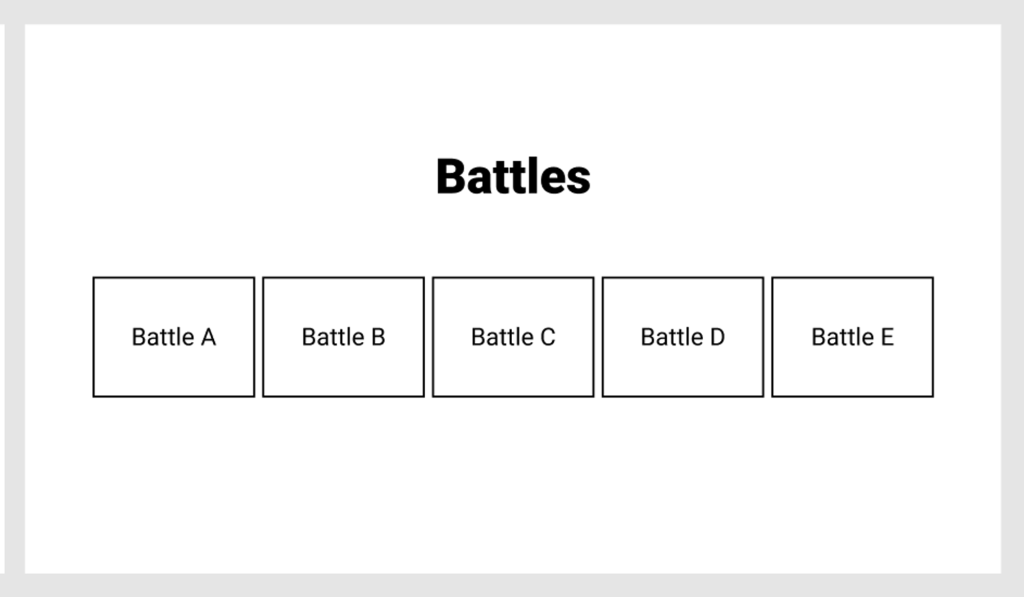
Sales pitches often stop at defining the problem and then jump into the product demo. This is a common mistake.
It assumes that prospect understands the heavy lifting the product does for them.
So don’t jump into your solution yet.
Educate them about battles they would face & fight in the process of solving the problem – which you just framed in the previous step.
This is the opportunity to educate them about the nuances of the solution space (which you are an expert in).
Here’s an example from a recent implementation of this template where the product was a security compliance automation tool that helps get compliant faster. The battles one must face in the process of getting compliant are:
- Define a security program
- Implement 100s of security requirements
- Manage & administer the security program
- Collect evidences & proof of execution
- Get successfully audited
- Share the results (eg. ISO certificate etc) with prospects in a secure manner
You can create a fancy battle map to illustrate these for your space or keep it simple, that’s a design choice.
But the outcome should be the same: the prospect need to feel oh-i-didn’t-know-that as you educate them & introduce them to the complexities of solving the problem they have.
Step 3: Evaluating options
Now that the prospect understands the nuances of the solution space and have the problem clearly anchored in the back of their mind — it’s time to lay out the choices they have and educate them how far each option will take them.
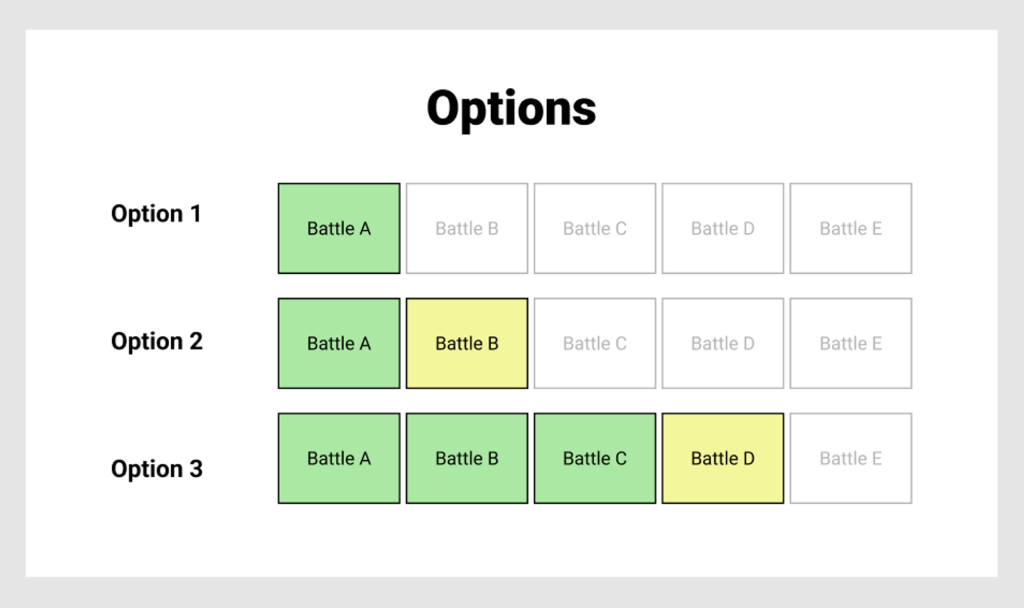
The key in this section is to verbally highlight the gap in each of the available options.
Sidenote: We often think that other companies offering the same solutions as we do are our competitors.
That is correct — but not complete.
You are more often than not competing with existing solutions the prospect is already using to solve their problems. And they may not be your direct competitors.
Example:
- Selling a BI tool? You are competing with Excel.
- Selling an online assessment software? You’re competing with Google Forms.
- Selling a compliance automation tool? You are competing with infosec consultants.
So use the solution categories as “options”.
You can give examples of the prominent companies within each category that the prospect might already be aware of.
Step 4: An ideal world
Once they understand the gaps in existing solutions, they are now primed to appreciate what your product brings to the table.
Paint an “ideal world” picture in their minds by listing out traits of an ideal solution.
These trait are more or less the opposite of the gaps that you highlighted in the previous slides.
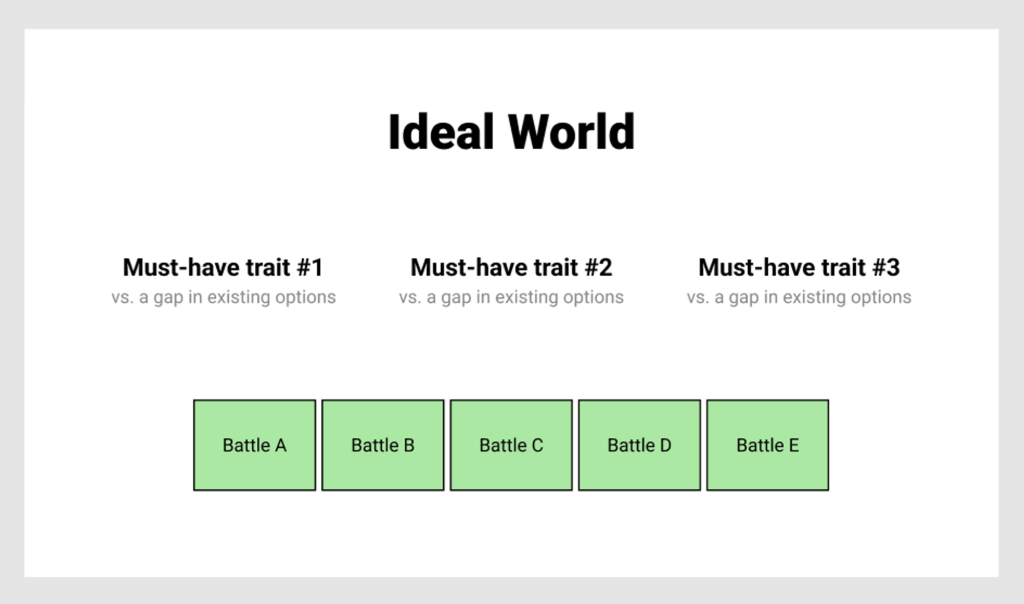
As you say these traits out loud, end with a simple question: “Right?”
And wait for an answer.
If you have everything dialed-in, the prospect is mostly likely to say “right” & buy into your version of the ideal world.
This is my favourite part.
You hit next on your keyboard, the next slide shows up and you say “That’s your-product-name. Product is trait 1, product is trait 2, product is trait 3”
Boom, you have now deeply embedded your product as an ideal solution in their minds.
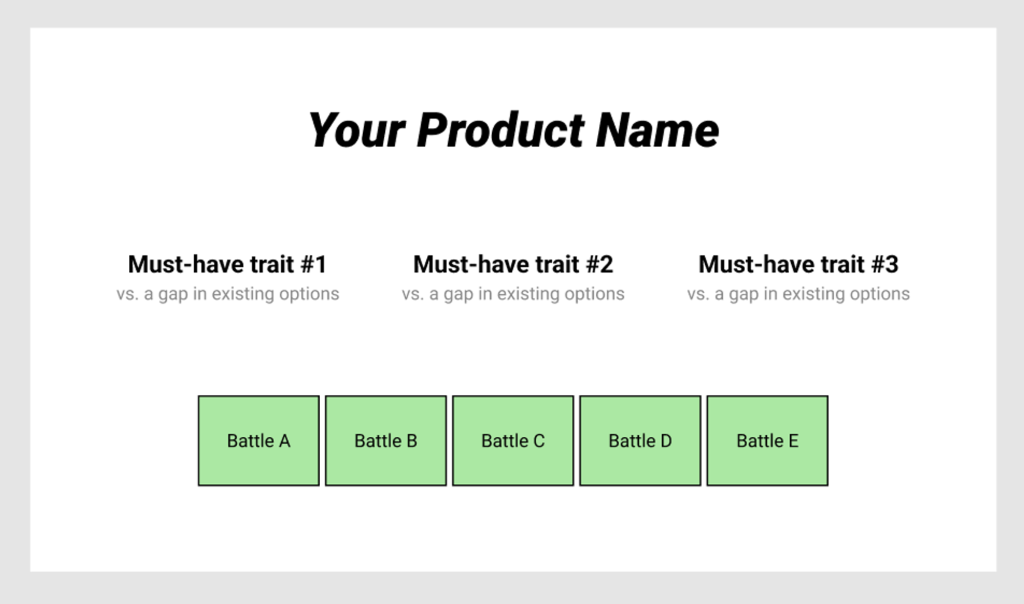
Yes, it’ll take some time to figure out the battles, gaps and traits and the flow that it all makes sense when put together. But if you’ve done the steps right and hit the right notes, you’ll come out on top.
Step 5: Demo
You now have earned the right to showcase your product.
The prospect is now impatient to see how your solution fits into their day-to-day workflow.
Congratulations, you’ve successfully educated the prospect in a way that they can go back to their team and discuss the nuances with a lot of depth and clarity.
Chances are, you’ll close them. Enjoy that sweet commission/revenue.
Even if you don’t – they’ll always remember you for helping them and increase affinity towards your brand.